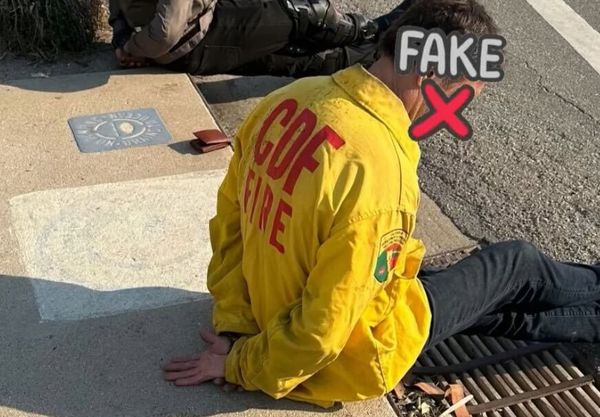With 2 ½ years of COVID-19 experience behind us, we can now identify the missed opportunities the medical and public health communities had to control the pandemic. There are three well-established areas where the virus caught the world unprepared: asymptomatic viral transmission from the infected to the uninfected; airborne spread from extremely small particles, especially indoors; and rapid emergence of new COVID-19 variants. These unexpected and mostly unprecedented developments thwarted early efforts to control the virus and caused devastating consequences including more than 6.5 million deaths worldwide and counting.
-- Asymptomatic transmission: With its initial community spread, COVID-19 appeared to behave like influenza in early 2020. Gradually a crucial difference between COVID-19 and the flu became apparent. With the flu, the majority of the population has been exposed in previous years to some flu variant, so an immune response and the attendant symptoms — fever, sore throat, runny nose — develop quickly with subsequent infections. So, as the flu virus becomes transmissible, many people are already exhibiting symptoms.
What was unrecognized with COVID-19 was that many infected patients could transmit the virus before showing symptoms. Because this was a new virus that no one had experienced in the past, humans did not have specific immune memory. As a result, those infected did not show symptoms right away. Before people knew they were sick, they were becoming contagious as the virus multiplied in their bodies. The situation is different today because most people have had COVID-19 or have been vaccinated. With that acquired immune memory, they develop symptoms earlier, and those symptoms correlate more closely, but not perfectly, with the potential for viral transmission.
In the early days of COVID-19, the implications of asymptomatic transmission were profound. Initial claims were that better testing and contact tracing in the first phase of the pandemic would have limited COVID-19 spread. In retrospect, asymptomatic transmission made that unlikely. If you can’t see obvious symptoms indicating that certain people are infected, whom do you choose to test? And until you have some positive test results, how do you contact-trace? (In truth, billions of dollars were spent on contact tracing with little to show for it.)
In the first months, leaders in charge of pandemic control failed to adequately warn people to avoid crowd gatherings and public transportation, where infected but asymptomatic people were likely to come together. Additionally, conflicting advice from public health officials about wearing masks perplexed Americans. Surgical masks offer some protection against certain forms of transmission, and well-fitting, respirator-grade masks provide strong protection. But months went by before officials settled on that messaging. As a result, untold thousands of people confused about mask-wearing acquired infections. Some confusion continues to this day.
-- Airborne spread from extremely small particles (aerosols): Most traditional respiratory viral infections are spread by larger particles that travel limited distances. Infection is caused by close contact between two people, or when larger particles land on surfaces or on someone’s hands and become sources for infection. This was the early message put out by experts for COVID-19. In March 2020, the World Health Organization stated unequivocally (with “not” in caps), “COVID-19 is NOT airborne. The coronavirus is mainly transmitted through droplets generated when an infected person coughs, sneezes or speaks.”
In fact, COVID-19 was then and today is often airborne. (Keep reading.) Countries including the U.S. were slow to recover from this serious scientific miscalculation and faulty declaration. The dominant narrative resulted in an overemphasis in measures such as disinfecting surfaces and avoiding touching the mouth, nose and eyes. To date, it is unlikely anyone has caught COVID-19 from handling the mail.
But this emphasis came at the expense of attention to indoor air quality. Now we know that airborne spread by much smaller particles is common and possibly the most important mode of transmission in many settings. The WHO was loath to emphasize aerosol transmission for two years.
Failure to appreciate the potential danger of these aerosol particles from the breath of an infected person meant the public was unaware that transmission indoors was far more likely than outdoors. (In the summer of 2020, Chicago inexplicably closed parks and beaches but not the bars.) Reducing the time we spend indoors with others and improving indoor ventilation, especially in schools where open windows and frequent outdoor breaks should be routine, received insufficient emphasis. Even today, government officials give insufficient attention to improving indoor ventilation. Aerosol scientists should be key scientific advisers.
-- Rapid emergence of variants: While some virologists warned early on about the ability of the COVID-19 virus to mutate, most of the early scientific literature downplayed how rapidly this could occur. Newer viral identification techniques were essential to revealing that variants appeared much more quickly than anticipated, surprising much of the public health community, which had banked on vaccination and herd immunity to stop the pandemic. Variants reduced vaccine effectiveness and essentially put an end to the early herd-immunity strategy. Most important, new COVID-19 variants pose a recurring problem, limiting vaccine durability.
For future reference: Confronting a rapidly expanding pandemic requires using forward thinking, expecting the unexpected and, above all, employing a flexible approach when the facts no longer conform to our beliefs.
As George Bernard Shaw once observed, “Those who cannot change their minds cannot change anything.”
____
ABOUT THE WRITER
Dr. Cory Franklin is a retired intensive care physician. Dr. Robert Weinstein is an infectious disease specialist at Rush University Medical Center.







